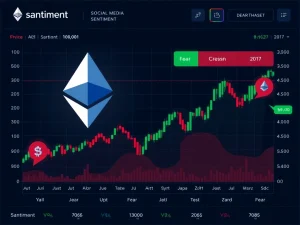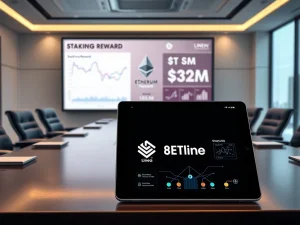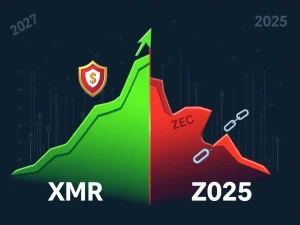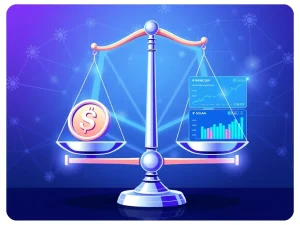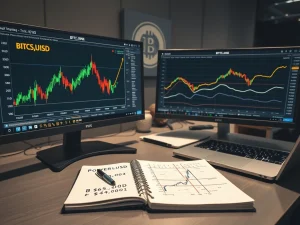XRP’s Seismic Shift: How It’s Challenging SWIFT for Global Payments
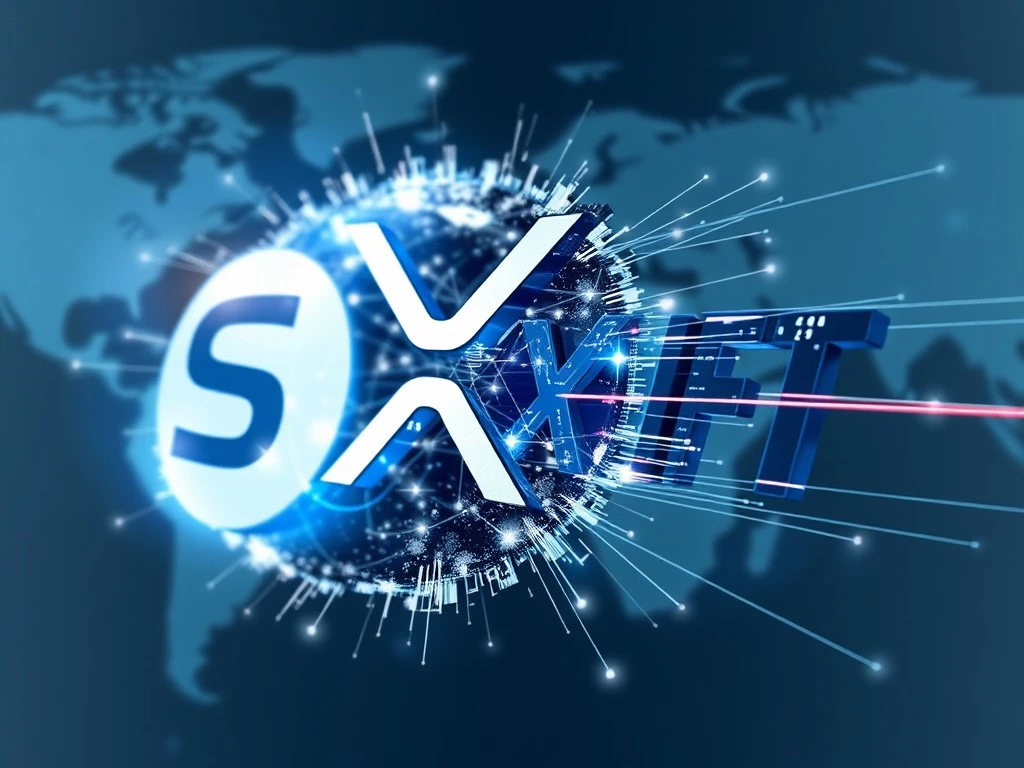
The global financial system is on the cusp of a monumental transformation. For decades, SWIFT has been the undisputed king of international money transfers, a cornerstone of global commerce. But what if a challenger emerged, armed with groundbreaking technology and a vision for a more efficient, equitable financial future? Enter XRP, the digital asset designed for fast, low-cost cross-border payments, now poised to redefine how the world moves money. Could XRP truly dismantle SWIFT’s long-standing dominance? Let’s dive into the unfolding drama.
The SWIFT Dilemma: Why Legacy Systems Are Falling Behind
For over five decades, the Society for Worldwide Interbank Financial Telecommunication, or SWIFT, has been the bedrock of international finance, connecting over 11,000 financial institutions globally. It’s a system built for a different era, and its limitations are becoming increasingly apparent in our fast-paced digital world. Critics point to several critical inefficiencies that make SWIFT an outdated solution for modern cross-border payments:
- Sluggish Processing Times: Traditional SWIFT transactions can often take days to clear and settle, creating delays and hindering efficient global trade.
- High Costs: The multi-intermediary nature of SWIFT transactions means that each bank in the chain adds its own fees, significantly increasing the overall cost of international transfers.
- Lack of Real-Time Settlement: SWIFT operates on a messaging system, not a real-time settlement layer. This means there’s no immediate finality to transactions, leading to liquidity challenges for financial institutions.
- Centralized Control: As a centralized network, SWIFT is susceptible to geopolitical pressures, leading to its ‘weaponization’ by governments to exclude certain nations, creating a demand for politically neutral alternatives.
These drawbacks have opened the door for innovative solutions, and that’s where XRP enters the fray.
XRP’s Unmatched Efficiency: A Blockchain Revolution for Cross-Border Payments
In stark contrast to SWIFT‘s traditional messaging system, XRP leverages cutting-edge blockchain technology to revolutionize how money moves globally. Designed specifically for enterprise-grade solutions, XRP enables near-instant transactions at minimal fractions of a cent. This efficiency is achieved by bypassing multiple intermediaries, offering real-time settlement and finality. Analyst Pumpius highlights XRP‘s ascent, positioning it as a ‘new chesspiece’ in global finance, capable of bridging gaps where SWIFT‘s centralized model falters [1]. The speed and cost-effectiveness offered by the XRP Ledger (XRPL) are critical advantages in an economy that prioritizes speed and transparency.
RippleNet and ODL: Fueling XRP’s Institutional Adoption
A key driver behind XRP‘s growing influence is the expanding adoption of RippleNet, Ripple’s global payments network. More than 100 financial institutions worldwide have already integrated Ripple’s On-Demand Liquidity (ODL) system. ODL utilizes XRP to facilitate instantaneous cross-border payments by acting as a bridge currency between different fiat currencies. This innovative approach provides liquidity on demand, eliminating the need for pre-funded nostro/vostro accounts – a significant cost and time saver for banks. Furthermore, as countries explore Central Bank Digital Currencies (CBDCs), the XRP Ledger (XRPL) is increasingly being eyed for its potential interoperability solutions, further amplifying its strategic relevance [1]. The seamless integration offered by RippleNet positions XRP as a practical and scalable solution for the future of global finance.
Geopolitical Shifts: The Demand for Neutral Blockchain Solutions
Beyond technological superiority, geopolitical dynamics are playing a pivotal role in the paradigm shift away from traditional systems like SWIFT. The ‘weaponization’ of SWIFT, such as the exclusion of certain nations from the network, has created a pressing demand for politically neutral alternatives. XRP‘s decentralized architecture and global reach align perfectly with this need, making it an attractive option for institutions wary of geopolitical risks and centralized control. As Pumpius aptly puts it, “SWIFT’s last sunset isn’t just about technology, it’s about control. As power shifts away from legacy institutions to decentralized networks, XRP stands as the most viable bridge between old money and the new digital economy” [1]. This underlying geopolitical tension provides a powerful impetus for the adoption of decentralized blockchain solutions.
XRPL’s Growing Ecosystem: Is 14% Global Payment Migration Realistic?
The tangible evidence of XRP‘s momentum is reflected in the surge of its underlying network, the XRP Ledger. Active wallets on the XRPL recently hit a record 7.24 million, a clear indicator of robust retail and institutional interest. This growth is fueled by factors such as continued cross-border payments adoption, the burgeoning trend of real-world asset tokenization, and increasing institutional validation. On-chain analytics suggest that the XRPL ecosystem is rapidly converging with mainstream financial infrastructure. Experts now project that an astounding up to 14% of global payment volume could potentially migrate to the XRP Ledger in the coming years [1]. This isn’t just a speculative forecast; it’s a testament to the growing confidence in XRP‘s capability to handle significant global transaction volumes, making it a formidable contender against SWIFT.
While the complete decline of SWIFT remains a topic of ongoing debate, the confluence of technological innovation, significant geopolitical realignments, and undeniable user adoption metrics paints a compelling narrative for XRP‘s pivotal role in the future of finance. As the XRP Ledger‘s wallet count and transaction activity continue their upward trajectory, the financial industry watches closely to see if this revolutionary blockchain solution can sustain its momentum and firmly establish itself as a viable, and perhaps even dominant, alternative to the legacy system. The XRP vs. SWIFT narrative is far from over, but the tides are undeniably turning.
Frequently Asked Questions (FAQs)
What is the primary difference between SWIFT and XRP for international payments?
SWIFT is a messaging network that facilitates communication between banks for traditional wire transfers, which can be slow and costly due to multiple intermediaries. XRP, on the other hand, is a digital asset that leverages blockchain technology to enable near-instant, low-cost, real-time settlement of cross-border payments by acting as a bridge currency.
How does RippleNet’s On-Demand Liquidity (ODL) system work with XRP?
RippleNet’s ODL system uses XRP as an intermediary asset to provide liquidity for cross-border transactions. Instead of pre-funding accounts in various currencies, financial institutions can instantly convert their local currency to XRP, send the XRP across borders, and have it converted to the destination currency. This eliminates the need for pre-funded nostro/vostro accounts, reducing costs and improving efficiency.
Why are geopolitical factors influencing the shift from SWIFT to alternatives like XRP?
The centralized nature of SWIFT allows it to be used as a geopolitical tool, with certain nations being excluded from the network. This ‘weaponization’ has driven a demand for politically neutral, decentralized alternatives like XRP, which offer a more robust and less susceptible pathway for international transactions, appealing to countries seeking to mitigate such risks.
What is the significance of the XRP Ledger’s active wallet growth?
The surge in active XRP Ledger wallets (reaching 7.24 million) signifies growing interest and adoption from both retail users and institutional players. This growth indicates increasing confidence in XRP’s utility for cross-border payments, real-world asset tokenization, and its overall ecosystem, suggesting a broadening base for future payment migration.
Is the 14% global payment migration projection for XRP realistic?
The projection of up to 14% of global payment volume migrating to the XRP Ledger is based on on-chain analytics and expert analysis, indicating a strong potential. While ambitious, it reflects the significant advantages XRP offers over traditional systems in terms of speed, cost, and efficiency, coupled with increasing institutional adoption and geopolitical drivers.
What are Central Bank Digital Currencies (CBDCs) and how does XRP relate to them?
Central Bank Digital Currencies (CBDCs) are digital forms of a country’s fiat currency, issued and backed by its central bank. The XRP Ledger is being explored by countries as a potential solution for CBDC interoperability, meaning it could facilitate seamless transactions and exchanges between different national CBDCs, further enhancing its strategic relevance in the future of global finance.



